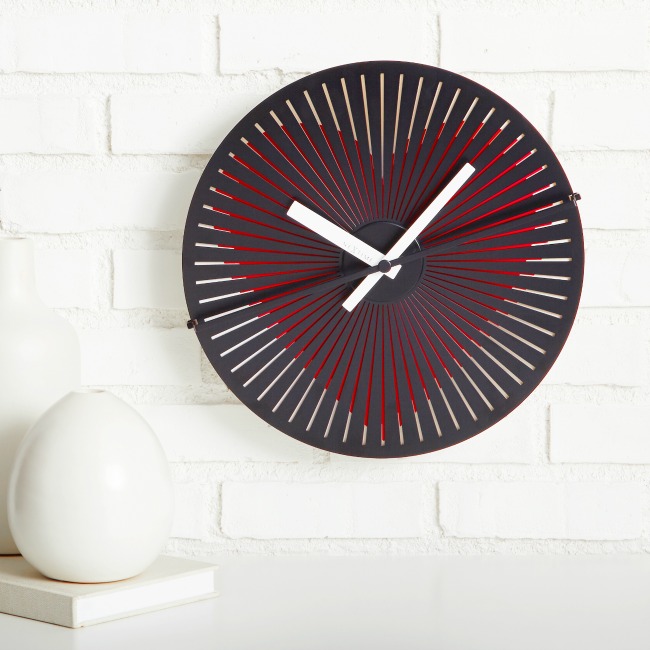
Our beating heart clock combines elements of art and science in a kinegram, a manipulation of still images to convey a sense of repetitive motion.
Remember the simple flip books you made as a kid? A few drawings stacked in sequence, bound, and when flipped, a cartoon hero seemed to run across the page. What was this wizardry that brought crude line drawings to life? It was thanks to an optical phenomenon called the persistence of vision, where the breaks between ‘frames’ go unnoticed because of the inherent lag in how fast our eyes update visual information. On a more grown-up level, the same principle makes the magic of television and movies possible. In fact, films are sometimes called flicks because of the flickering nature of how they work: at least 24 frames per second race before our eyes to make the illusion of continuous motion.
But in between flip books and films, moving image pioneers leveraged two factors to make early visual entertainment. The moire effect, named for the shimmering of certain fabrics, refers to the illusion of a third, shifting pattern when two patterns intersect. And a zoetrope was a kind of early low-tech film, where a strip of images—say, a horse running—was applied to the inside of a drum and viewed through a series of perforations from the outside. When the drum was spun, the persistence of vision principle formed the illusion of movement, as split-second segments were revealed.
Beating Heart Wall Clock | $85

No Comments